Fall is a good time to thin satsuki azaleas that filled in over summer.
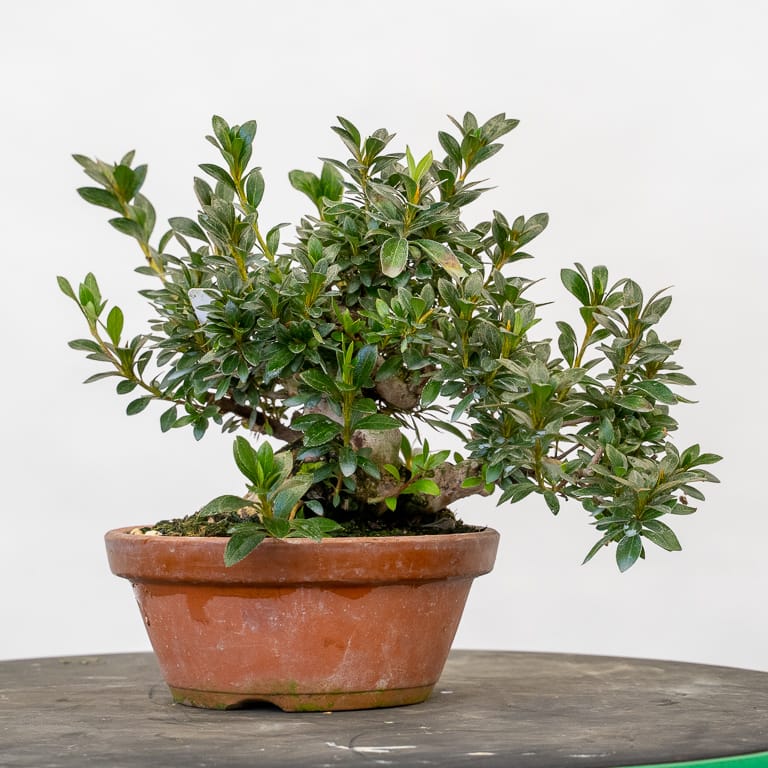
Shohin satsuki azalea – ‘Hanabin’
Doing this work lets light into the tree’s interior and makes it easy to spray for thrips, lace bugs, or any other insects that feed on satsuki foliage.
The work is simple: remove unnecessary shoots, reduce long branches, and remove old leaves. Here’s what this looks like.
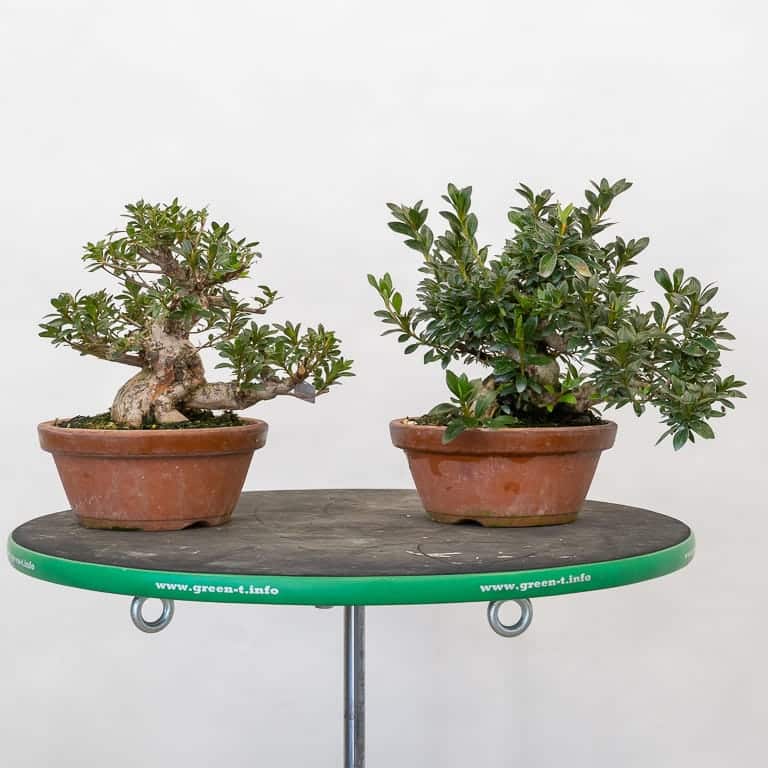
Shohin azaleas – the tree on the left has already been thinned
I begin by removing long shoots that I don’t plan to use.
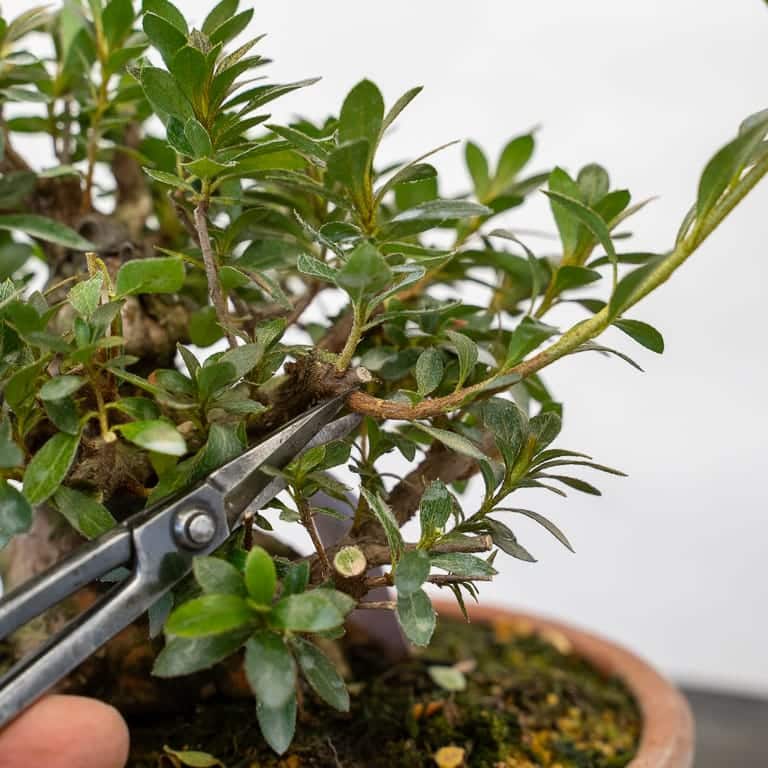
Removing a long shoot
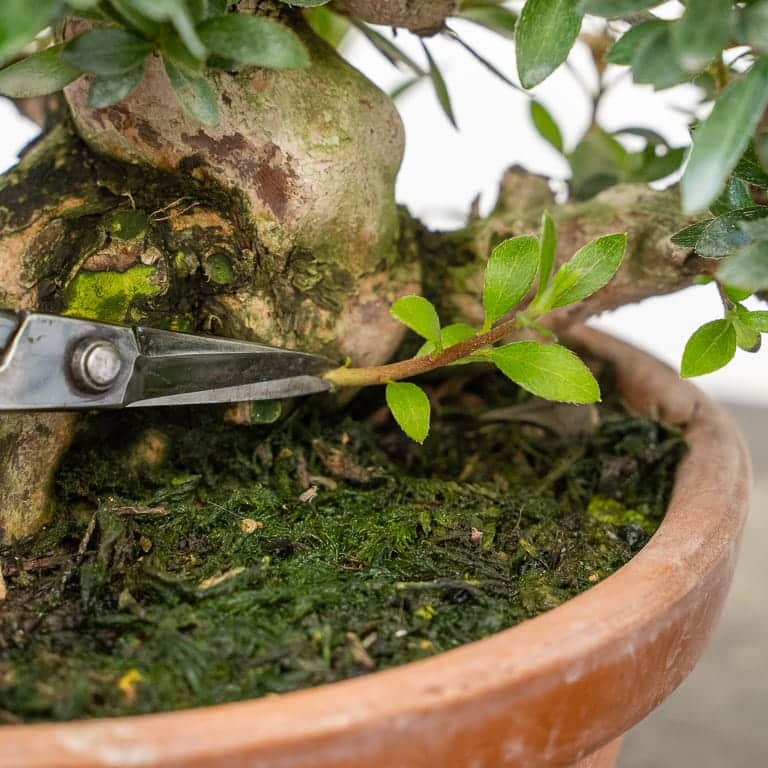
Removing a shoot on the trunk
Although it’s tempting to reduce long shoots by cutting them in half, I try to avoid this to preserve as many flowers as possible. This is less important for young trees in development – the case for the present azalea – but it’s important for any trees that will be displayed in bloom.
Next, I reduce long branches by cutting back to a secondary branch.
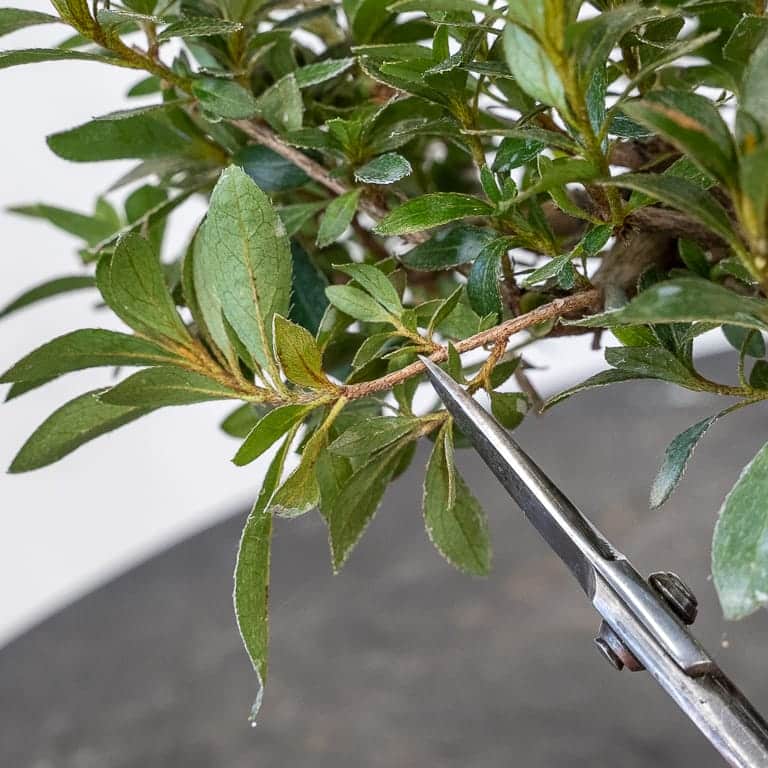
Cutting back to a secondary branch
Once the pruning is done, I remove old leaves in crowded areas.
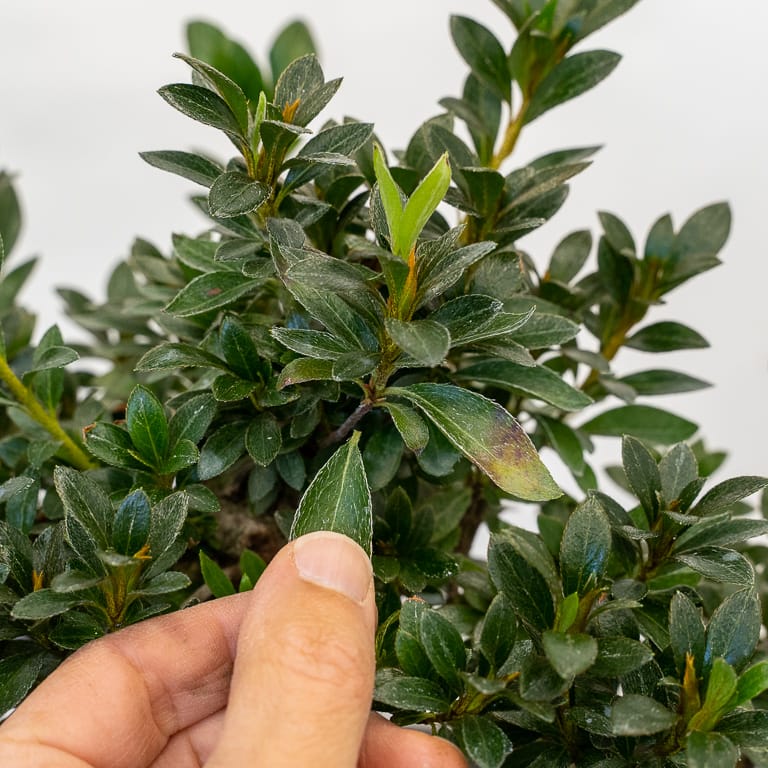
Removing an old leaf
Here’s the tree after thinning and leaf-plucking.
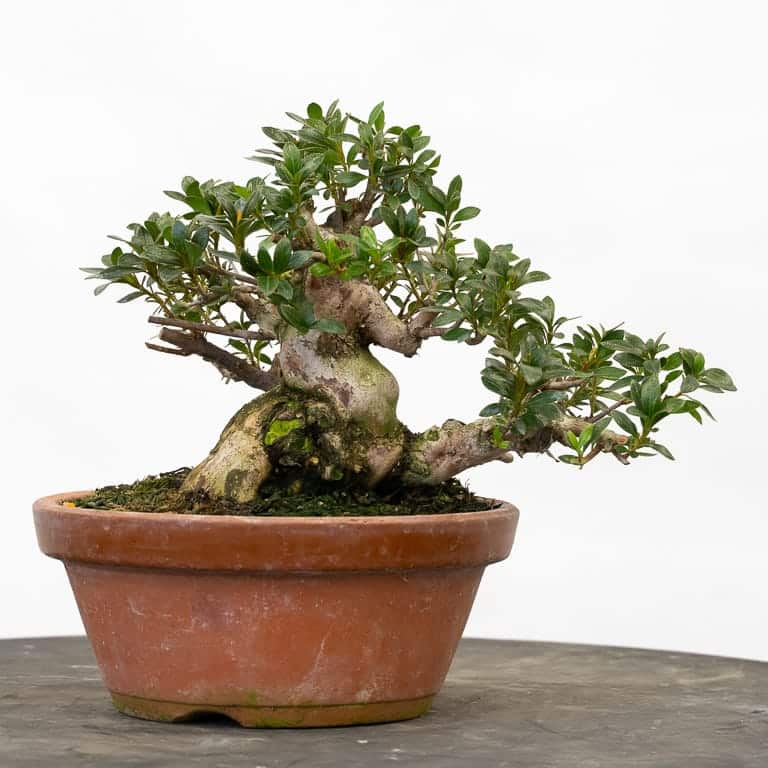
Fall clean-up complete – 6.5″
I’ll be leading a workshop on similar trees at next year’s California Shohin Seminar. See below for details.
Registration Now Open for the 2020 Shohin Seminar
The California Shohin Society is hosting their biennial seminar next year from January 31st through February 2nd in Santa Nella, California.
The event is among the top shohin-themed events in the country. Visitors come for the Friday demos, the Saturday workshops, and the Sunday presentations.
I’ll be leading a workshop on satsuki azaleas Saturday afternoon (see photos of the trees) and presenting on shohin development Sunday morning.
To register for the event or sign up for a workshop, visit the 2020 Shohin Seminar website.
Subscribe to Bonsai Tonight
New Posts Delivered Every Tuesday and Friday
Darlene Hutt says
Heading into fall…Boon told me to only remove downward branches because of my location was NE Ohio. What location are you in that you can do a harder thinning of the tree?
Jonas Dupuich says
Hi Darlene – I’m in Northern California where winter is mild, but the same work can be done where it gets cold if the tree is protected in winter.